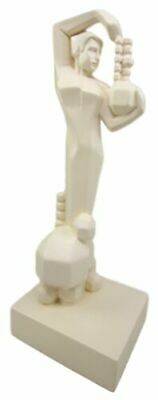-40%
Ancient Celtic Money Rings, Antique Javanese, Indonesian Currency Trade Rings
$ 21.09
- Description
- Size Guide
Description
Ancient Celtic Money Rings, Antique Javanese, Indonesian Currency Trade RingsType: Horseshoe Shaped with Interrupted, flat ends (dumbell ring).
Size/weight (largest to smallest):
1) 2cm c 1-3/4cm, 15.9 grams
2) 1-3/4cm x 1-1/2cm, 7 grams
3) 1-3/4cm x 1-3/4cm 4.7 grams
4) 1-3/4cm x 1-3/4cm 3.8 grams
5) 1-3/4cm x 1-3/4cm, 4.8 grams
6) 1-1-4cm x 1-1/4 cm 3.0 grams
7) 1cm x 1cm, 1.8 grams
8) 1cm x 1cm, 1.8 grams
Long before the introduction of struck coinage into ancient Southeast Asia, these copper rings were used as trade currency by the Malay
Peninsula
tribes and were often worn on clothing or tied together by ropes. These particular rings, often referred to as "proto-money", were created in ancient Java (now Indonesia) as long ago as
7th Cent. B.C. The History and Coinage of South East Asia presents examples of ring monies from South India through Japan, including several in "lead" from S. Thailand and S. Vietnam. In Java, core of the old Majapahit Empire, they are called kelok, used as Money in Markets & Trade In Early Southeast Asia.The Majapahit Empire was a Javanese Hindu-Buddhist thalassocratic empire in Southeast Asia, based on the island of Java (part of modern-day Indonesia). Majapahit reached its peak of glory during the era of Hayam Wuruk, whose reign from 1350 to 1389 was marked by conquest which extended through Southeast Asia. Majapahit was one of the last major Hindu empires of the region and is considered to be one of the greatest and most powerful empires in the history of Indonesia and Southeast Asia, one that is sometimes seen as the precedent for Indonesia's modern boundaries. It's influence extended beyond the modern territory of Indonesia and has been the subject of many studies.











